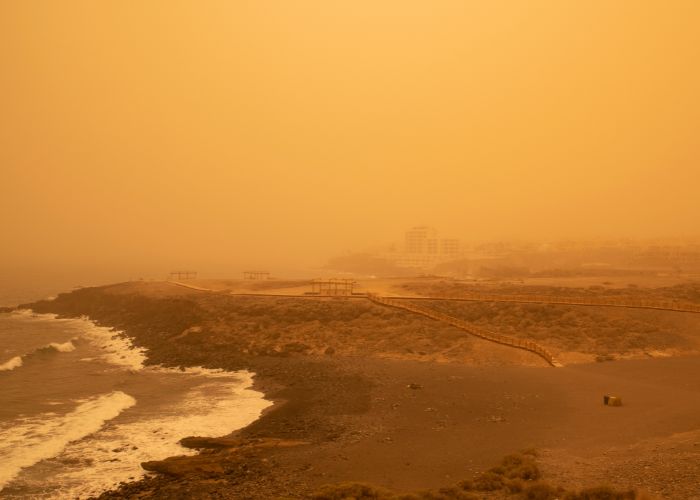MÁLAGA – Since Sunday it has been raining again here and there in Andalucia and on the Costa del Sol with local showers of Sahara mud. The sky also turns a vague orange due to the large amounts of dust. However, the calima, as the phenomenon is called, is less intense than that of the spring.
In many places in southern Spain, facades still turn rusty brown because of the mud during spring rain showers. The dust mixed with water has a clay-like texture and is therefore not so easy to remove.
Mud showers
The conjunction between the great anticyclone in the northwest and the DANA in the southwest of the Gulf of Cádiz is driving the dust. The first showers with mud deposits fell at the end of the first Sunday in October. Also on Monday, according to Aemet, there is a reasonable chance that the dust in suspension will return.
After a cold end of last week, temperatures are rising again. The highest record is recorded in Vélez-Málaga: a maximum of 29 degrees, while in the rest of the province it remains around a maximum of 27 degrees. The minimum is expected in Antequera, where the thermometer is forecast to reach 13 degrees (and a maximum of 28).
Related post: What are the possible health effects of Saharan sand in the air?
La Vanguardia posts a photo gallery with photos of residents of southern Spain. Here you can see the beige-coloured and hazy skies over various landscapes of the Costa del Sol.
A lot of dust in the air also causes health problems. On Tuesday, March 15 and Wednesday, March 16, Spain was the most polluted country in the world due to the influx of this suspended dust that spread over the peninsula with a very unusual intensity. People needed medical attention because of respiratory problems caused by breathing air full of dust particles.
Also positive effects of calima
However, not all the consequences of this cloud of Sahara sand driven by storm Celia are negative: Experts point out that it is also a good natural fertiliser. How? Surface dust deposits are a source of micronutrients for both terrestrial and marine ecosystems. Therefore, researchers assume that dust from the Sahara fertilises the Amazon rainforest thanks to the iron and phosphorus that the dust carries.


